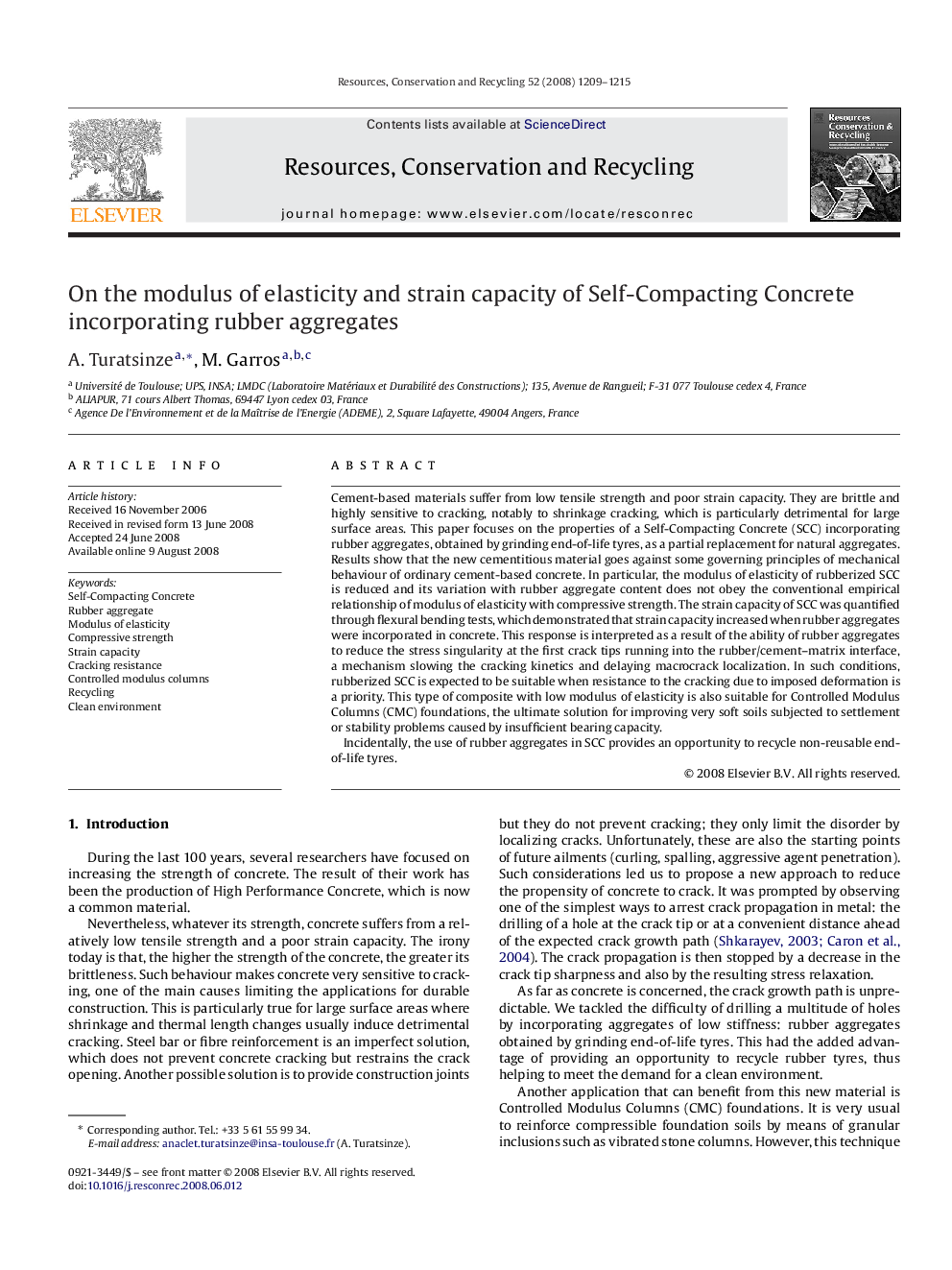| Article ID | Journal | Published Year | Pages | File Type |
|---|---|---|---|---|
| 1063646 | Resources, Conservation and Recycling | 2008 | 7 Pages |
Cement-based materials suffer from low tensile strength and poor strain capacity. They are brittle and highly sensitive to cracking, notably to shrinkage cracking, which is particularly detrimental for large surface areas. This paper focuses on the properties of a Self-Compacting Concrete (SCC) incorporating rubber aggregates, obtained by grinding end-of-life tyres, as a partial replacement for natural aggregates. Results show that the new cementitious material goes against some governing principles of mechanical behaviour of ordinary cement-based concrete. In particular, the modulus of elasticity of rubberized SCC is reduced and its variation with rubber aggregate content does not obey the conventional empirical relationship of modulus of elasticity with compressive strength. The strain capacity of SCC was quantified through flexural bending tests, which demonstrated that strain capacity increased when rubber aggregates were incorporated in concrete. This response is interpreted as a result of the ability of rubber aggregates to reduce the stress singularity at the first crack tips running into the rubber/cement–matrix interface, a mechanism slowing the cracking kinetics and delaying macrocrack localization. In such conditions, rubberized SCC is expected to be suitable when resistance to the cracking due to imposed deformation is a priority. This type of composite with low modulus of elasticity is also suitable for Controlled Modulus Columns (CMC) foundations, the ultimate solution for improving very soft soils subjected to settlement or stability problems caused by insufficient bearing capacity.Incidentally, the use of rubber aggregates in SCC provides an opportunity to recycle non-reusable end-of-life tyres.
